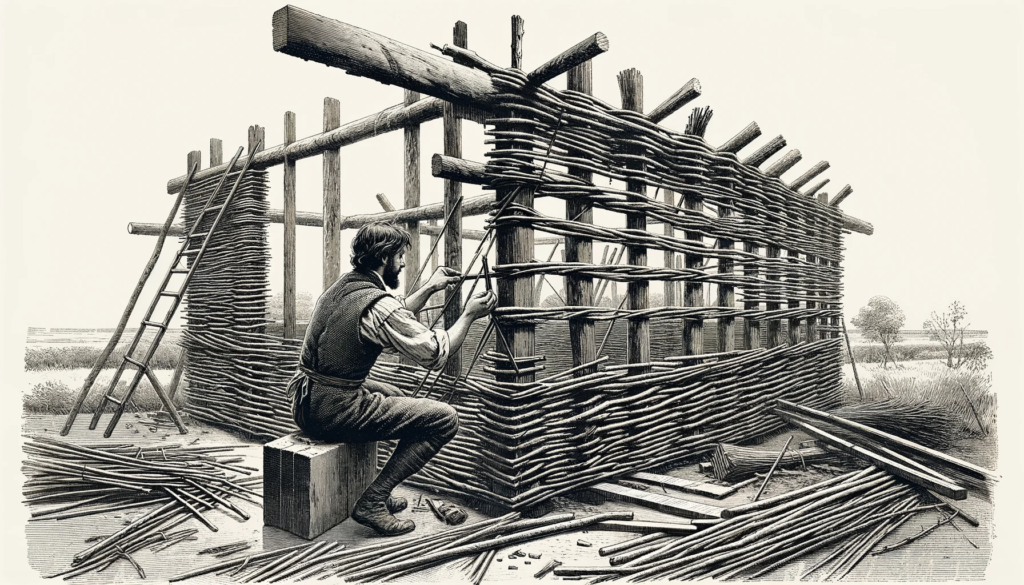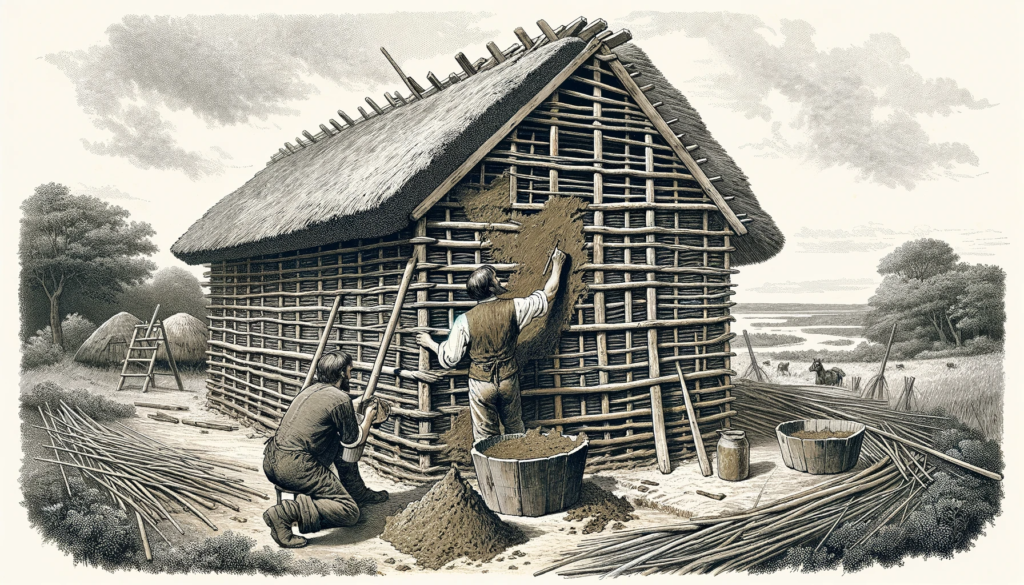In a world increasingly conscious of its environmental footprint, there’s a growing trend in the real estate and construction industries that might surprise many: the resurgence of ancient construction materials and methods. Among these time-honored techniques, wattle and daub stand out for their eco-friendly nature and the unique comfort they bring to all homes.
What is Wattle and Daub?
Wattle and daub is a building method that dates back thousands of years, used by civilizations across the globe. It’s a testament to its durability and practicality that it’s making a comeback in modern construction.
The Process of Wattle and Daub
Step 1: Creating the Wattle

The ‘wattle’ part of this technique involves weaving a lattice of wooden strips or branches (often willow or hazel) to form a sturdy framework. You secure this lattice to a timber frame – a process that requires skill but is surprisingly straightforward.
Step 2: Applying the Daub

‘Daub’ is a mixture of materials like clay, sand, animal dung, and straw. You plaster this blend over the wattle to form a hard, protective surface. The daub acts as an excellent insulator, keeping homes warm in winter and cool in summer.
Step 3: Drying and Finishing

Once applied, the daub must be allowed to dry slowly. You can finish it with a lime wash, which protects the daub and gives it a clean, attractive appearance. This final layer can be reapplied as needed for maintenance.
Why Wattle and Daub?
Environmentally Friendly
The materials used in wattle and daub are natural and often sourced locally. This reduces the carbon footprint associated with transporting construction materials. Moreover, the components are biodegradable, reducing long-term environmental impact.
Comfort at Home
Homes built with wattle and daub have a unique charm and offer comfort that modern materials struggle to match. That’s because the natural insulating properties of the daub create a living space that’s warm in the winter and cool in the summer, leading to reduced energy usage for heating and cooling.

Conclusion
So, our quest for sustainability and comfort, revisiting old construction materials like wattle and daub is not just a trip to the past but a step towards a greener future. Therefore, this method, rooted in ancient wisdom, is proving its worth in the modern world, combining environmental benefits with creating comfortable, inviting homes. As we continue to explore eco-friendly building options, the lessons from history can guide us towards a more sustainable way of living.

One thought on “Ancient Construction Techniques: Wattle and Daub”